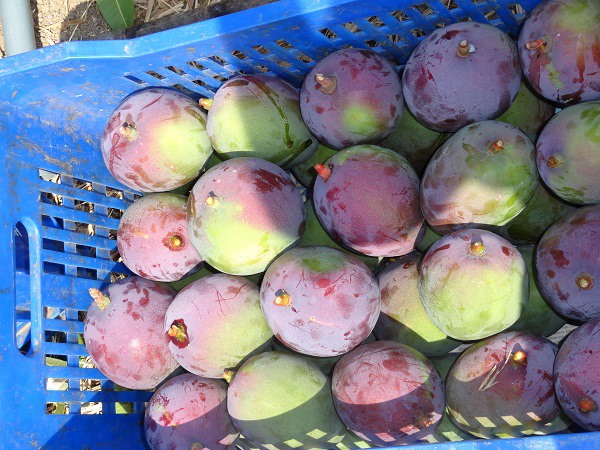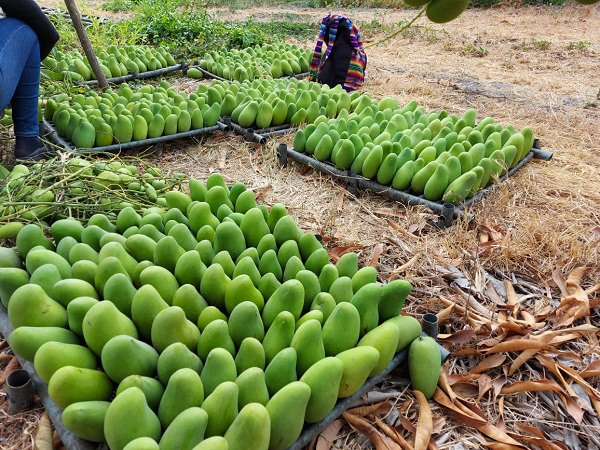Ecuador is the largest banana exporter in the world. But that country boasts many other tropical fruits too. Andrea Boekhoud-Montoya of Ecuador's Trade & Investment Office in the Netherlands reckons there is a lot of potential, especially for mango exports.

The Ministry of Foreign Trade in Ecuador's trade office connects exporters in that country with European importers. "We recently completed our annual Business Matchmaking Ecuador: Bananas and Tropical Fruit," says Andrea.
"This year we invited companies to participate in the Virtual Business Roundtable again. Bananas and mangoes were highlighted. As were baby bananas, pineapples, dragonfruit, passion fruit, and avocados."
Favorable cultivation conditions and a nearby port
The Ecuadorian mango season runs from around the beginning of October to late December. Most mangoes are grown in Guayas, a province in the southwest of the country. There are five packing facilities in the country.
And almost all the producers are about a 90-minute drive from one of them. Total mango production covers an area of about 7,700 hectares. Of this, 5,500 hectares are for export. The rest is sold locally or processed into mango juice or concentrate.
More than 50% of all the mangoes cultivated in Ecuador are Tommy Atkins. The Ataulfo, Kent, and Keitt varieties follow. "Mangoes from Ecuador are characterized by good quality and a unique flavor," says Bernardo Malo van Refin Tropicals.
"Guayas, the main cultivation area, has favorable growing conditions. Also, the port of Guayaquil is near the packing stations. These packing plants are equipped with the latest technology, and they're all Primus GFS & SMETA certified."

Ecuadorian mangoes generally taste sweeter. That is thanks to the country being on the equator, where the sun is most powerful. All that sunshine leads to good production and high Brix levels.
Export markets far and wide
Annually, the country exports about 2,500 containers of mangoes. About 90% goes to the United States. Canada, Europe, and Mexico are other important export destinations. Andrea works with Irene Minga, who is the Pro Ecuador sector expert.
They encourage exporters to focus on multiple markets, such as Europe. "And Ecuadorians are becoming increasingly aware of this. The pandemic has made them realize that it's too big a risk to focus on one market. Exports to Europe are still quite small, but we foresee good opportunities," explains Andrea.
Ecuador will have to start considering consumer preference more then. Europe mainly demands fiberless varieties such as Kent and Keitt. In Ecuador, the production of these varieties currently only covers 15%. "Tommy Atkins is the largest grown variety in Ecuador."
"But it's not very popular in the European market. We're looking into that," says Irene. "The trend is for fiberless fruit. Now the challenge becomes to find which weather conditions will be optimal for switching varieties. Growers must cultivate more fiberless mangoes. That will benefit exports."
"Noteworthy is that, in Europe, demand for the Ataulfo variety is starting to rise. That offers expansion opportunities. More and more producers in the country are being Rainforest certified. That's an essential requirement to gain access to key countries in Europe," Irene adds.
All the right certificates
A new GlobalGAP approved certificate has been introduced. That is good news for Ecuador. "To participate internationally, it's vital that all Ecuadorian producers are duly certified per things like quality standards, fair trade, sustainability, and organic criteria."
"Currently, that's a basic requirement for market access. After considerable efforts, the sector has achieved this important objective. That sets Ecuador apart from some other countries in the region," says Irene.
Good expectations for new season
The new season began recently. Ecuador expects to export some 55,000 tons of mangoes in the 2021/2022 season. According to Bernardo, the fruit's quality is good, thanks to the favorable growing weather conditions. "The winter rain stopped in time, and temperatures remained stable. The season should be at its peak now. That will last until about the third week of November," he concludes
More information
Andrea Boekhoud-Montoya
Ecuador's Trade & Investment Office
[email protected]
